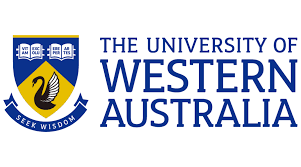University of Western Australia: Exhibition weaves common thread connecting artists
The Lawrence Wilson Art Gallery at The University of Western Australia will reopen this weekend with a new exhibition that emphasises the importance of relationships – creative, professional, and personal – that enable artists to survive and flourish.
Sustaining the art of practice draws on works from the Cruthers Collection of Women’s Art (CCWA) to highlight the links between professional artists and the communities and environments that support their public practice.
The exhibition, which was curated by Lee Kinsella, includes newly commissioned work as well as loaned works and was developed in response to the COVID-19 pandemic.
“In difficult moments, we draw upon our support networks and personal relationships, particularly those of friends and family to sustain us,” Ms Kinsella said.
“This exhibition attempts to make visible the threads that that connect relationships between artists and their ongoing support networks built over many years.
“These networks sustain the artists’ work in and around activism, writing, family, community, mental health, and other circles that reveal the interconnected nature of creativity.”
The CCWA, the nation’s foremost public collection of art by Australian women and non-binary artists, is a unique and idiosyncratic collection spanning works from the 1890s to present day, and includes notable works of still life, abstraction, early postmodernism, and second-wave feminism.
Featured alongside Sustaining the art of practice is a display of selected works from the CCWA that highlight portraits. A key aim of the two exhibitions is to expand outwards from the CCWA holdings and place these in dialogue with contemporary narratives relating to place and identity.
The exhibition utilises clusters of associations that reveal unique personal connections between groups of artists as they engaged with various communities throughout Australia from the latter half of the 20th century to present day.
Works by artists living on the APY lands, the Perth coastline, Melbourne in the 1980s and 90s, Adelaide in the 70s and 80s, and Sydney in the 80s and 90s emerge in this exhibition as case studies for how creative practice is maintained and flourishes.
“Artists are engaged in swirling social relationships and part of communities that are vibrant and alive in the expression of culture – art, performance, music, poetry,” Ms Kinsella said.
Groupings of newly acquired works that are tangible evidence of a friendship between Maria Kozic and Sally Jackson in Melbourne through the 1980s and into the early 90s will be a highlight on display.
The exhibition proffers portraits as a visual link to the artists’ lives, giving viewers an intimate insight into the individuals who are important to artists.
A newly commissioned video installation by Badimia and Yued artist Amanda Bell, hand-made banners by Raquel Ormella, Lydia Young’s photography of Ngaanyatjarra lands and Perth-based contemporary artist Jody Quackenbush’s textile creations also feature in the exhibition.
Professor Helen Grace’s notable photographic series Christmas dinner, 1979, documents the days of preparation and invisible labour performed by women in the family, as led by the matriarch on the family farm.
Her photographic series are exhibited alongside the work of Narelle Jubelin and Margaret Morgan – artist friends and colleagues who feature in her private photographic records.
Professor Grace will open the exhibition and present a talk in the gallery this Saturday 25 June at 2pm. A catalogue that features commissioned essays that trace relationships, respect and reciprocity will be available for presale from the LWAG Shop.

